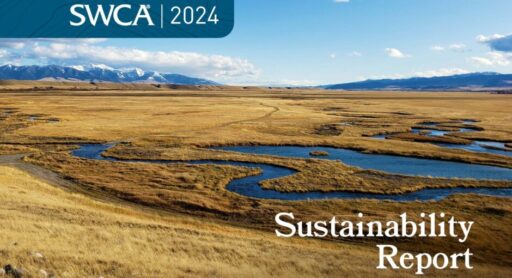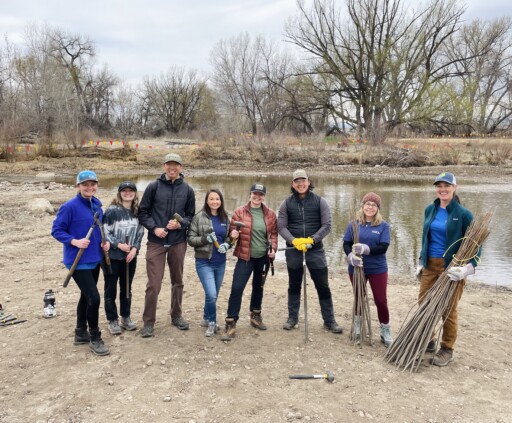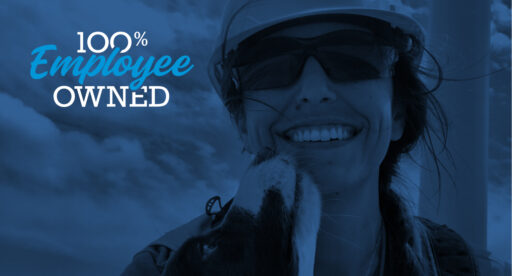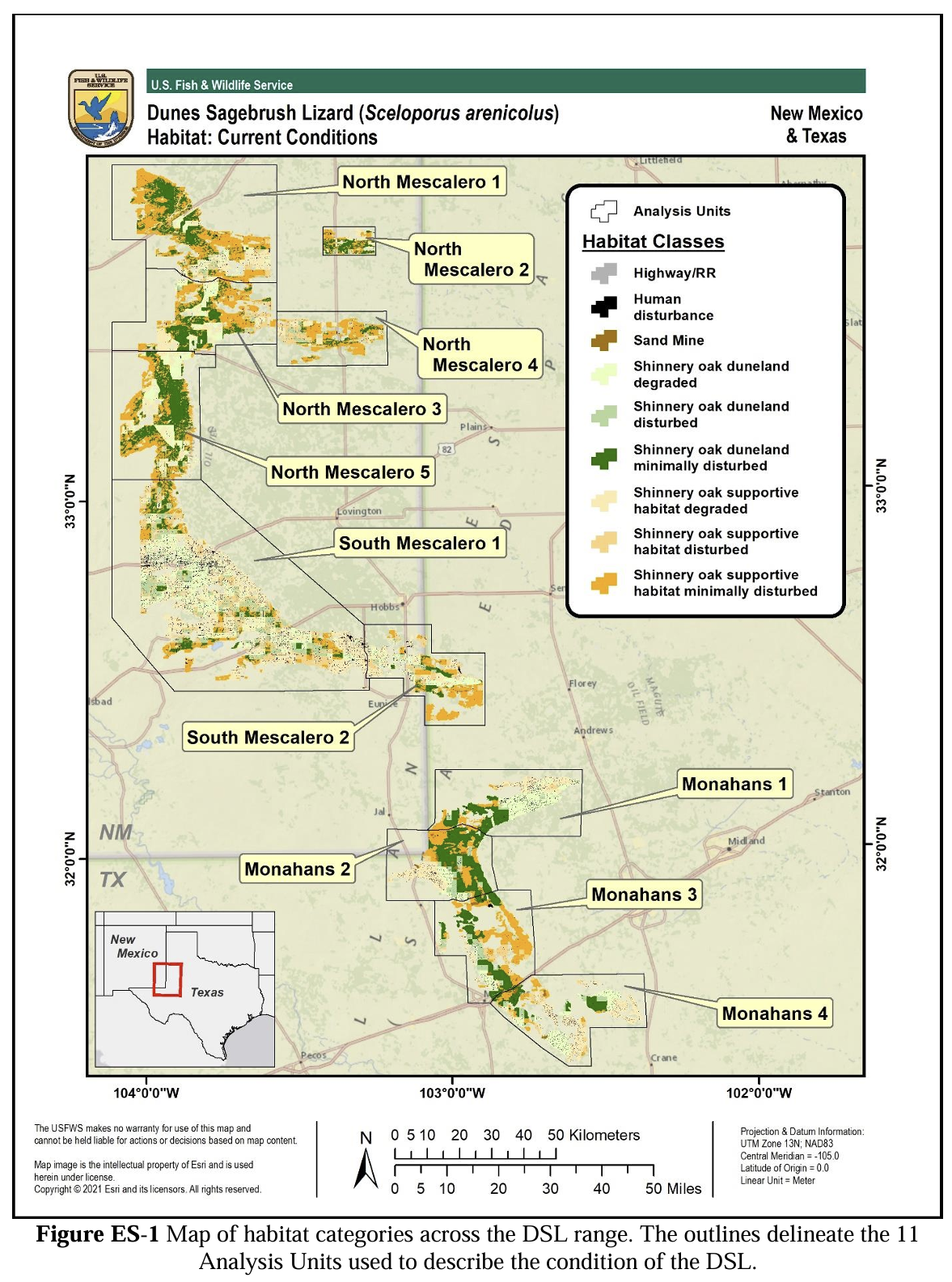2025
Comparably’s Best Company Outlook
* Providing engineering services in these locations through SWCA Environmental Consulting & Engineering, Inc., an affiliate of SWCA.

From the experts we hire, to the clients we partner with, our greatest opportunity for success lies in our ability to bring the best team together for every project.
That’s why:

At SWCA, sustainability means balancing humanity’s social, economic, and environmental needs to provide a healthy planet for future generations.

SWCA employs smart, talented, problem-solvers dedicated to our purpose of preserving natural and cultural resources for tomorrow while enabling projects that benefit people today.

At SWCA, you’re not just an employee. You’re an owner. Everyone you work with has a stake in your success, so your hard work pays off – for the clients, for the company, and for your retirement goals.
Dunes Sagebrush Lizard Listed as Endangered by USFWS
Since joining SWCA in 2015, Nicole’s expertise in ecology, evolution, and conservation biology has led to significant contributions across nearly all service lines and ten states, cementing numerous trusted partnerships.
Nicole’s influence extends to her technical and peer-reviewed publications, with contributions to more than twenty-three scientific meetings. Notable publications include Distance Sampling Underestimates Population Densities of Dune-Dwelling Lizards in the Society for the Study of Amphibians and Reptiles Journal of Herpetology, and a study on Population Variation in Dune-Dwelling Lizards in Response to Patch Size, Patch Quality, and Oil and Gas Development published by the Southwestern Association of Naturalists, addressing impacts of patch size, quality, and oil and gas development.

Amanda Glen is SWCA’s natural resources technical director for biological services and provides strategic guidance on permitting and compliance for matters involving protected wildlife, plants, and habitats. Currently managing a national practice, she has more than 25 years of consulting experience with an emphasis on the Endangered Species Act (ESA) and how compliance with the ESA influences other regulatory programs. Her wealth of experience pertaining to endangered species issues includes research, permitting, consultations, status reviews, and conservation planning. Her experience includes negotiating compliance solutions for critically imperiled species facing potential determinations of jeopardy or adverse modification of designated critical habitats. She has led efforts to delist species no longer requiring the protections of the ESA when supported by sound science, and has been involved in voluntary conservation planning to help preclude the need to list species. Amanda frequently presents at regional and national conferences on matters related to the ESA, including new listings, regulatory and policy changes, and trends in compliance strategies.

Jenn Clayton is an environmental specialist with a focus in natural resources, planning and the National Environmental Policy Act (NEPA) in SWCA Environmental Consultants’ Durango, Colorado office. Her expertise is in natural resources with extensive experience conducting biological surveys including terrestrial and aquatic threatened and endangered species and associated critical habitat, forest inventory, and wildfire risk assessments. She has 5 years’ experience working with private, federal, state, tribal and local clients. Ms. Clayton has extensive practices in relocating and monitoring threatened and endangered Species of Colorado, New Mexico and Nevada, including the razorback sucker (Xyrauchen texanus), Brack’s hardwall cactus (Sclerocaactus cloveriae var. brackii), inventory and tagging desert tortoise (Gopherus agassizii), as well as bald eagle (Haliaeetus leucocephalus) and golden eagle (Aquila chrysaetos), burrowing owl (Athene cunicularia) surveys, and Migratory Bird Treaty Act surveys. Ms. Clayton also received training from the U.S. Fish and Wildlife in 2015 to monitor desert tortoise.

Matt McMillan is the Natural Resources Director in SWCA’s Austin office. A biologist and herpetologist with 23 years of experience in natural resource studies throughout the southwest United States, providing technical expertise on threatened and endangered species as well as surveys and habitat assessments, aquatic resource surveys, delineations, and Clean Water Act permitting, vegetation sampling, habitat restoration, and ecological monitoring. He also has conducted wetland delineations, wetland qualitative assessments, ordinary high water mark delineations, and vegetation sampling throughout New Mexico as well as in Oklahoma and Texas. Mr. McMillan works with clients to identify, develop, and monitor ecological parameters and provide environmental compliance surveys prior to, during, and post-construction of project development. He has written BAs, BEs, wetland delineations, and other resource reports for private, federal, state, and local clients in support of consultations with the U.S. Fish and Wildlife Service, U.S. Army Corps of Engineers, U.S. Bureau of Land Management, U.S. Forest Service, Reclamation, and state and local agencies. He has worked on threatened and endangered species matters in riparian systems on the Rio Grande, Canadian, and Gila Rivers in New Mexico and Pecos River in New Mexico and Texas for a variety of clients including the New Mexico Interstate Stream Commission, New Mexico Department of Transportation, the U.S. Army Corps of Engineers, and the U.S. Bureau of Reclamation. Mr. McMillan has worked in the Chihuahuan, Sonoran, and Mojave Deserts on the systematics, biogeography, and conservation biology of reptiles and specifically population monitoring of rattlesnakes and desert tortoises. Mr. McMillan has worked under USFWS 10(a)1(A) permits to handle, bleed, and rehydrate tortoises in Arizona, California, Nevada, and Utah. He is currently permitted to handle federal and state threatened and endangered amphibians and reptiles including the Chiricahua leopard frog, Jemez Mountains salamander, dunes sagebrush lizard, narrow-headed gartersnake, and Mexican gartersnake. He is also permitted to handle federal and state threatened and endangered fishes including the Rio Grande silvery minnow, loach minnow, and spikedace.





The U.S. Fish and Wildlife Service (USFWS) listed the dune sagebrush lizard (DSL) as endangered under the Endangered Species Act (ESA). This final rule and “endangered” listing status will be in effect June 20, 2024. The USFWS did not designate critical habitat at this time but indicated a proposed rule to designate critical habitat is forthcoming within the next year. The USFWS identified habitat loss, fragmentation, and degradation particularly from oil and gas exploration and frac sand mining as the primary threats to the DSL. USFWS identified climate change and extreme drought as factors that compound the primary threats of habitat loss and fragmentation.
The DSL’s narrow range is limited to shinnery oak sand dune ecosystems of eastern New Mexico and western Texas. This includes portions of Lea, Eddy, Chaves, and Roosevelt Counties of New Mexico, and Andrews, Winkler, Ward, and Crane Counties of Texas. This listing has implications for project proponents operating in the Permian Basin, particularly in Texas, where other triggers for federal regulatory involvement are few and far between. In the listing, the USFWS identified example circumstances in which incidental take may occur and for which ESA authorization may be warranted, including activities that destroy, alter, degrade, or remove shinnery oak duneland and shrubland vegetation that is likely to be occupied by DSL. The USFWS does not provide guidance about the kinds of activities that are likely to avoid incidental take of the DSL and may be conducted without ESA authorization.
If your project occurs in the range of the DSL, ESA compliance may include conducting interagency consultation, seeking an incidental take permit, participating in one of the existing voluntary conservation plans, or designing your project to avoid incidental take.
There are three existing voluntary conservation plans available for enrollment that offer regulatory assurances or streamlined consultation for non-federal and federal projects. Enrolled participants implement conservation measures to minimize impacts to the DSL and provide a net conservation benefit. Requirements and coverage areas vary by conservation plan. Enrollment into these plans must occur prior to June 20, 2024.
Once this listing rule is effective, non-federal project proponents working in a habitat occupied by the DSL may need to consider collaborating with USFWS on a habitat conservation plan and seeking an incidental take permit. Projects with a federal nexus must now undergo ESA Section 7 interagency consultation if the activity may affect the DSL. Conservation actions to address the impacts of take would be determined on a project-specific basis through coordination and consultation with USFWS.
SWCA can help you understand whether and how the DSL listing may affect project planning, approvals, or implementation. We can also help you identify ESA compliance options that best meet your circumstances and priorities. Whether you are currently enrolled or considering enrollment in a voluntary conservation plan, SWCA has expert understanding of the DSL and voluntary conservation agreements. With state-permitted, Qualified DSL Biologists in New Mexico and Texas, we have significant experience designing and performing DSL surveys. Our team has developed DSL-specific survey protocols that have been incorporated into DSL best management practices and conservation agreements. Our services include:
• Desktop Reviews
• On-site Habitat Assessments
• Habitat Suitability Designation Evaluations
• Presence/Absence Surveys
• Section 7 Biological Assessments
• Section 10 Habitat Conservation Plans